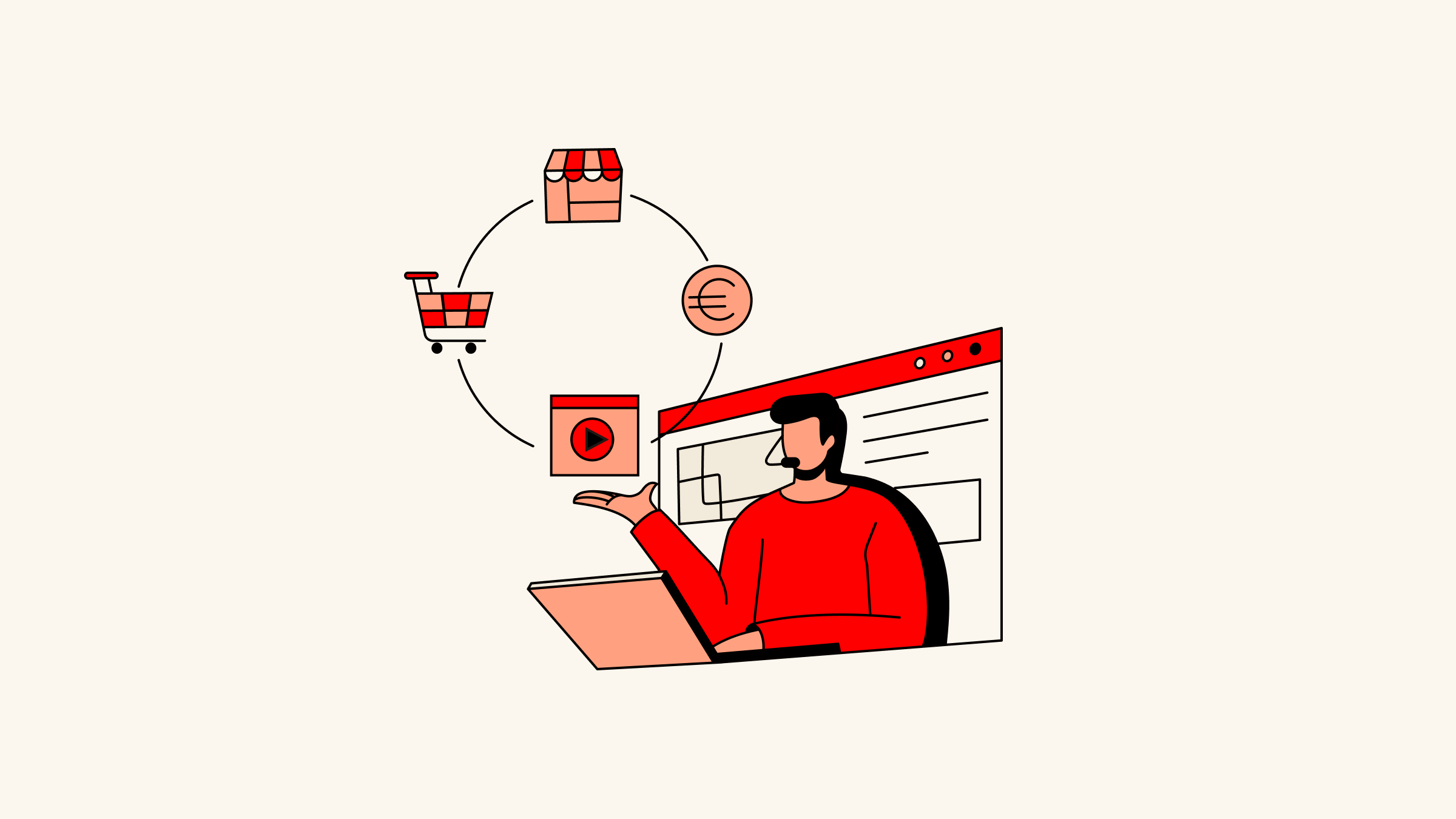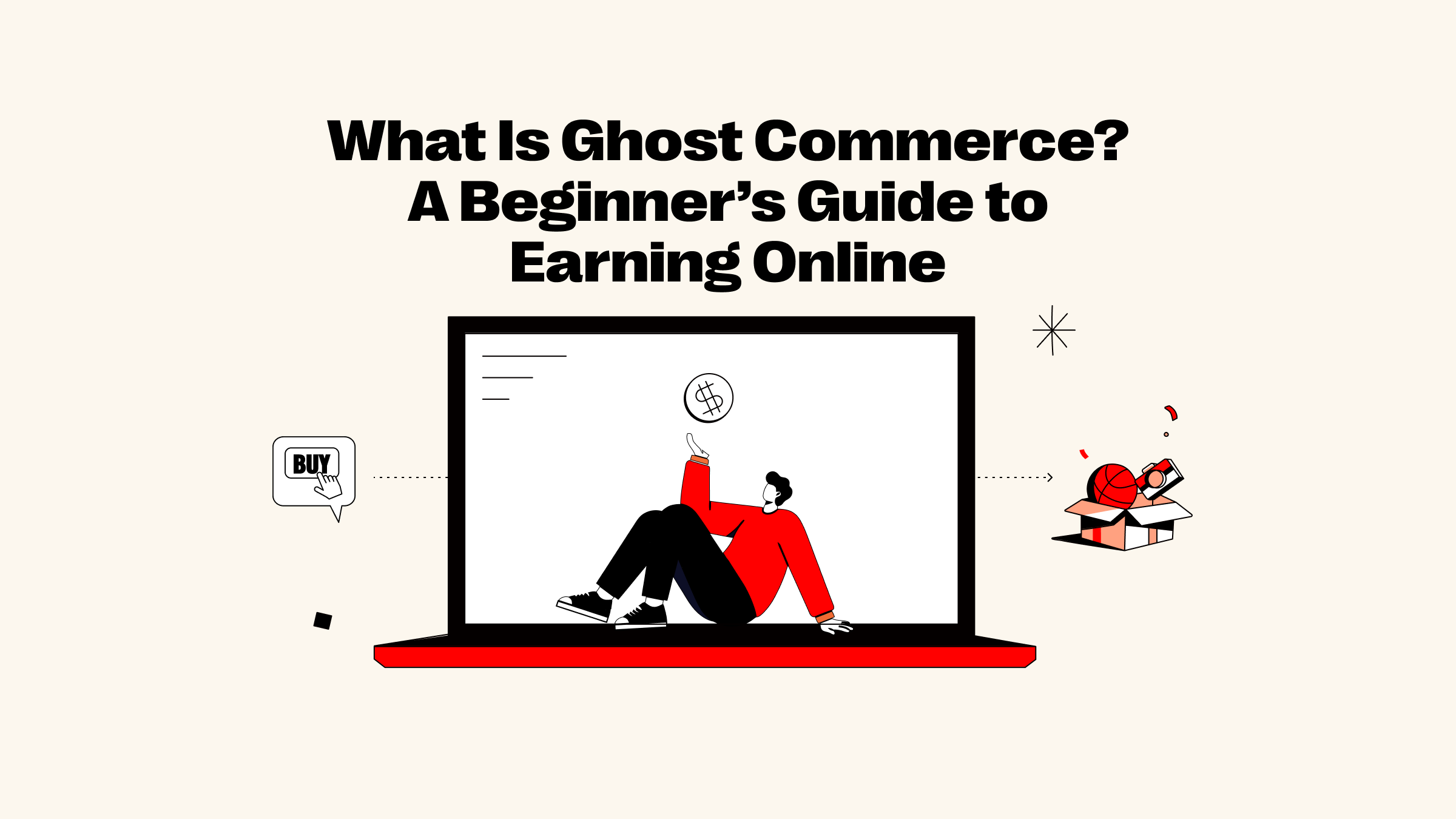You've probably had this moment—waiting for a package, something's off, and you reach out for help. A fast, friendly reply makes all the difference. That's the heart of good ecommerce customer service. Today's shoppers don't just want answers. Instead, they want to feel heard, valued, and supported throughout their journey. This blog will walk you through practical tools and strategies to upgrade your service, improve response times, and build deeper trust with every shopper.

What is ecommerce customer service?
Ecommerce customer service refers to the support and assistance provided to online shoppers before, during, and after their purchase. Unlike traditional retail, where in-store associates engage face-to-face, ecommerce support is digital—email threads, live chat windows, chatbots, and social media DMs replace handshakes and in-store demos.
Advantages of customer service in ecommerce
Exceptional ecommerce support service delivers far-reaching benefits:
-
Builds long-term customer relationships through trust
-
Drives word-of-mouth and positive online reviews
-
Reduces returns and chargebacks through better pre-sale support
-
Differentiates the brand in a saturated market
-
Increases the chance of upsells and repeat sales
-
Allows data collection to personalize and automate future experiences
Key elements of the best ecommerce customer service
A customer support system that converts browsers into loyal buyers requires deliberate effort. These core elements define best-in-class customer service in ecommerce BTC environments and drive meaningful brand loyalty.
Fast and friendly responses

Fast and friendly responses are essential pillars for ecommerce brands can't afford to overlook. "Fast" means meeting or exceeding customer expectations in response time, while "friendly" conveys empathy, warmth, and professionalism in every interaction. For instance, you can trigger shopping cart abandonment emails or messages within minutes to bring hesitant buyers back. You can also reply to product questions on your online store or social media channels in a friendly tone. Even something as simple as a polite "Thanks for your comment!" can reinforce a positive brand image.
Why does this matter? Because the payoffs for great customer experiences are tangible: brands can command up to a 16% price premium and see higher customer loyalty.
But how fast is fast enough? Below is a chart of standard first response time (FRT) expectations by channel to help guide your team's benchmarks:
| Support Channel | Standard First Response Time (FRT) |
| Live Chat | Less than 30 seconds |
| Phone Support | Within 3 minutes |
| Social Media | Within 60 minutes |
| Email Support | Within 24 hours |
Multi-channel support (Email, chat, social media)

Multi-channel support means giving your customers the freedom to reach you through the platforms they prefer, whether that's email, live chat, or social media. And you should recognize that your customer behavior isn't limited to one channel. Someone might scroll your Instagram page, send a DM, browse your store, and then shoot you an email—all in a single journey.
When you respond promptly to Instagram comments, reply to Facebook messages, handle live chat inquiries during checkout, or follow up on email support tickets with clarity and warmth, you demonstrate that your brand is accessible and trustworthy. And that's a big deal. Data Axle study show that businesses offering strong omnichannel customer engagement retain 89% of their customers, compared to 33% for those with weak strategies.
Personalization and customer history tracking

Personalization is more than just using a customer's name—it's about tailoring the entire experience based on their preferences, behavior, and history with your brand. When your ecommerce customer service team has access to a buyer's past purchases, previous conversations, and browsing habits, they can provide solutions faster and recommendations that actually matter.
According to PWC research, while 43% of U.S. consumers are hesitant to share personal data, 63% said they'd be more open to doing so if it means receiving truly valuable products or services. In other words, customers are willing to trade data for relevance and convenience.
Ok, let's take an example. Your customer is asking about a delayed order. If your support team sees they've placed three previous orders and had a past delivery issue, they can respond with empathy and accuracy—maybe even offer a discount proactively. The customer may buy it again without hesitation.
Easy return and refund processes

Returns are now a regular part of online shopping, so it is no longer a nice-to-have. In fact, the average e-commerce return rate, which stood at 16% in 2022, has now increased to somewhere between 20% and 30%. Just as customers are selective about what they buy, they're also becoming more proactive about returning products that don't meet expectations.
This trend makes it critical for brands to treat returns as part of the experience, not a nuisance. A seamless, no-hassle return policy shows you value your customers even after the sale. Prepaid labels, instant refunds, and easy-to-navigate portals are just a few ways to reduce friction.
And the payoff is real: 92% of shoppers say they'll buy again if the return process is easy.
Automation with a human touch

Automation, like customer service (AI) chatbots for ecommerce, smart ticket routing, or auto emails, helps online stores handle repetitive tasks, reduce response time, and stay available 24/7. It's a must for scaling support without burning out your team.
But balance matters. About 59% of consumers feel companies have lost the human touch. That's a red flag. People still want empathy, especially when they're frustrated. So, automation should enhance—not replace—human support.
For example, an AI assistant can greet customers by name, recall past purchases, suggest add-ons, and trigger friendly post-purchase emails. Smart ticketing routes issue the right agent, making support feel fast, personal, and just like in-store service. In a word, done right, automation can streamline service and still feel personal.
Tools that power customer service for ecommerce business (with examples)
Modern ecommerce brands rely on smart tools to scale meaningful service without losing the human feel. The following tools empower online sellers to maintain excellence as they grow.
Live chat and chatbots
Live chat and chatbots are already key players in ecommerce service. Many businesses are now leveling up with smarter tools to improve speed and accuracy.
Here's how Real Silk Life, a silk clothing brand, is doing it right:
Real Silk Life uses the AI chatbot QuickCEP to recommend products based on customer intent, auto-learn business documents and product manuals, and check logistics data in real time. Besides, with its AI shoppable videos, customers can explore and purchase products directly from engaging UGC content—turning views into sales while brands track performance through real-time analytics. To expand outreach, they also rely on SaleSmartly Chat for live sales support and bulk messaging.

Source from the Real Silk Life homepage banner
Want more customer service AI chatbot solutions for ecommerce? Here are two helpful:
-
SaleChaty: A free app improves efficiency while automating marketing with AI bots and process engines to boost conversions. It can even enhance global communication through real-time translation in 134 languages.
-
JivoChat Live Chat: This widget greets each site visitor with a relevant message, such as highlighting a discount or offering assistance, to start meaningful conversations and reduce bounce rates.
Email direct marketing (EDM)
EDM does more than drive sales. It delivers consistent, thoughtful customer service. With the right tools, brands can respond to customer needs, offer timely support, and create personalized experiences that feel human, not robotic.
Mailchimp enables new sellers to build smooth, automated email journeys that feel personal. For instance, Monday Girl, a North American networking platform, uses Mailchimp to send helpful onboarding messages, career goal quizzes, and tailored advice based on member interests. When members face layoffs or challenges, a supportive email series kicks in, turning email into a channel of care, not just promotion. Their high engagement (up to 85% open rates) proves that thoughtful communication builds lasting trust.

Source from the Monday Girl homepage banner
Omnisend also enhances customer service through full-cycle automation with cross-channel coordination. For The Gin Way, Piceci Services used Omnisend to create email flows that respond to customer behavior, sending order updates, checking in after delivery, and offering helpful product tips. These service-focused emails now generate 25% of email revenue, while improving satisfaction and return rates. It's proof that proactive communication makes customers feel remembered and respected.

Source from the Piceci Services homepage banner
CRM integration
A customer relationship management (CRM) system helps businesses organize contacts, track behavior, and tailor interactions based on preferences.
Today's shoppers expect more than just fast delivery—they want to be remembered. In fact, 73% say customer experience is a key part of their buying decisions, 42% would pay more for a friendly, welcoming experience, and 65% find a great experience more influential than advertising. That's where CRM makes a difference.
If your store runs on Shoplazza, you'll benefit from a built-in customer management system that lets you segment customer types, track purchase history, and understand individual preferences. You can automate key emails, like order confirmations, shipping updates, and delivery notices, while launching targeted campaigns based on behavior, such as special offers for loyal buyers or reminders for abandoned carts. Rather than sending the same message to everyone, CRM tools help you deliver personalized service that makes each customer feel recognized and appreciated.

Order tracking and updates
Order tracking and timely updates can reduce uncertainty and prevent service tickets. When buyers know exactly where their order stands, from payment to delivery, they feel more in control and less likely to reach out with complaints.
With Shoplazza's built-in order management system, sellers can access real-time details like shipping status, payment status, last visited pages, and full order histories. It also tracks abandoned checkouts, after-sales requests, dispute cases, and waybill statuses—all in one place.
Furthermore, some ecommerce businesses even layer in smart ticket routing systems to automatically assign customer inquiries to the most relevant support agent, ensuring quicker and more tailored resolutions.

Website analystics
Website data analytics plays a critical role in shaping a stronger customer experience. By tracking how visitors behave, from landing pages to checkout, sellers can uncover what's working and where users drop off. These insights help tailor offers, improve site flow, and create personalized experiences based on customer history and preferences.
To achieve this, Shoplazza provides a powerful analytics dashboard that gives ecommerce sellers full visibility into their business. You can monitor your conversion funnel, average order value, refund and repurchase rates, top-performing products by unit sold, and more. These data points not only improve marketing decisions but also help refine every customer interaction with precision.

Best practices to level up your customer support
Beyond tools, operational discipline sets great support teams apart. Here are essential practices to institutionalize excellence across your customer service operations.

Train your team consistently
No tool can replace a well-trained support team. Therefore, regular training sessions help agents stay aligned with your brand voice, policies, and customer expectations. From product updates to handling sensitive issues, ongoing learning ensures they're confident and equipped to solve problems quickly and with empathy.
Use feedback to improve service and products
Customer feedback is a goldmine. You can use a platform like Shoplazza to gather insights through surveys, post-chat or comment ratings, or follow-up emails. Then, use what you learn to improve not just your service, but also your product offerings. What's more, you can also create response templates for common scenarios, making your team faster and more consistent.
Example: "Hi [Name], we're sorry to hear about the issue with your order. We've escalated your case and will follow up within 24 hours. Thank you for your patience!"
Set up a knowledge base
82% of U.S. and 74% of non-U.S. consumers want more human interaction, even in automated experiences. That's where a well-built knowledge base comes in. It covers essentials like shipping, returns, product care, account setup, and more. When paired with automation, chatbots can reference this content to answer questions quickly but with a tone that feels human.
It also powers a clear, searchable FAQ page so customers can solve issues on their own. This not only reduces support tickets but also keeps responses consistent and helpful, freeing your team to focus on meaningful conversations that build stronger relationships.
Combine all support channels on one platform
Customers now message from everywhere—Instagram, WhatsApp, email, and live chat. The best way to handle this is by consolidating all those touchpoints into one dashboard.
JivoChat Live Chat and SaleChaty are great examples of omnichannel messengers made for ecommerce. They bring all your customer messages and calls into a single platform and sync seamlessly with tools like Facebook, Instagram, Telegram, Apple Business Chat, and email. This unified view means no missed messages, quicker response times, and more personalized support.
Final thoughts: Customer service is the new brand differentiator
In a competitive ecommerce environment, products can be copied, prices undercut, and ads ignored. But service—memorable, intuitive, and human—is harder to replicate. The brands that win aren't those shouting the loudest. They're the ones listening to the closest. You may invest in smart tools, train your team, and put the customer at the heart of every interaction. Because in today's "battlefield", ecommerce customer service isn't just support—it's strategy.


